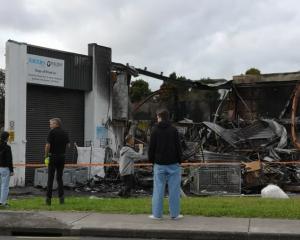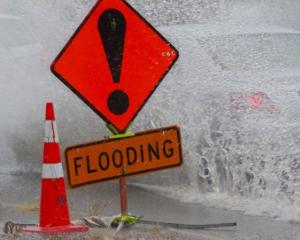The 40-year-old Filipino crewman, whose right arm was crushed in a self-closing watertight door on board MS Bremen on Friday, was winched from the ship in 6m swells on to a rescue helicopter, about 815km south of Invercargill on Sunday.
With favourable winds, the Otago Regional Rescue Helicopter, from Dunedin, and a Southern Lakes Helicopter, in Te Anau, reached the ship about 2pm, after leaving Invercargill at 11.10am.
The helicopters returned to Invercargill about 8.45pm.
The 1900km-round trip was the farthest either helicopter had flown on a rescue mission.
A Rescue Co-ordination Centre spokesman said rescue helicopters flew to Raoul Island, about 1000km northeast of the North Island, to search for a missing Department of Conservation worker, following a volcanic explosion, in March 2006.
It is believed the previous most distant rescue mission in southern waters was when the Southern Lakes Helicopter flew to the aid of man who was trapped in an auger on a fishing boat about 550km southeast of Invercargill in September 2004.
In the latest mission, the Otago Regional Rescue Helicopter, piloted by Graeme Gale, with co-pilot Stu Farquhar and paramedic Doug Flett on board, was partnered by Southern Lakes' long-range Squirrel from Te Anau, piloted by Richard Hayes, a pilot Mr Gale considered New Zealand's most experienced in the Southern Ocean.
Winch operator Lloyd Mathieson, who accompanied Mr Hayes, said the rescue went smoothly due to a "superb team effort".
The Southern Lakes crew had made the journey to Campbell Island many times and were very familiar with the area and conditions in the subantarctic, he said.
Mr Gale said such long-range operations were now possible because of the technology available to pilots, including range extender fuel tanks and night vision equipment.
His twin-engine BK helicopter had a range of about 1000km, dependent on conditions.
After waiting for more than 48 hours for a break in the weather, a decision was made to fly direct to the ship when the conditions became favourable.
On the return journey, the helicopters landed on Campbell Island, where Southern Lakes Helicopters keeps a supply of fuel, just for such occasions.
Mr Flett said the crewman had significant injuries to his hand that required surgery at Southland Hospital on Sunday night.
The patient was in a comfortable condition when he was picked up, thanks to the "excellent" medical care he had received on board the ship.
Mr Gale said the mission was neither daring, nor experimental.
It relied on hours of planning between the two helicopter crews, the Rescue Co-ordination Centre, MetService and the ship.
"Of all the jobs we do [this sort of job] is the pinnacle. It is probably the most stressful in terms of planning. It's probably less stressful going and doing the job than planning it."
At-sea rescues could not be taken lightly.
"You don't have options. Your planning is paramount."
MS Bremen was now making its way towards Lyttelton, from where it would head to Argentina, where it was originally supposed to conclude a 36-day tour of the subantarctic and the Antarctic, he said.













